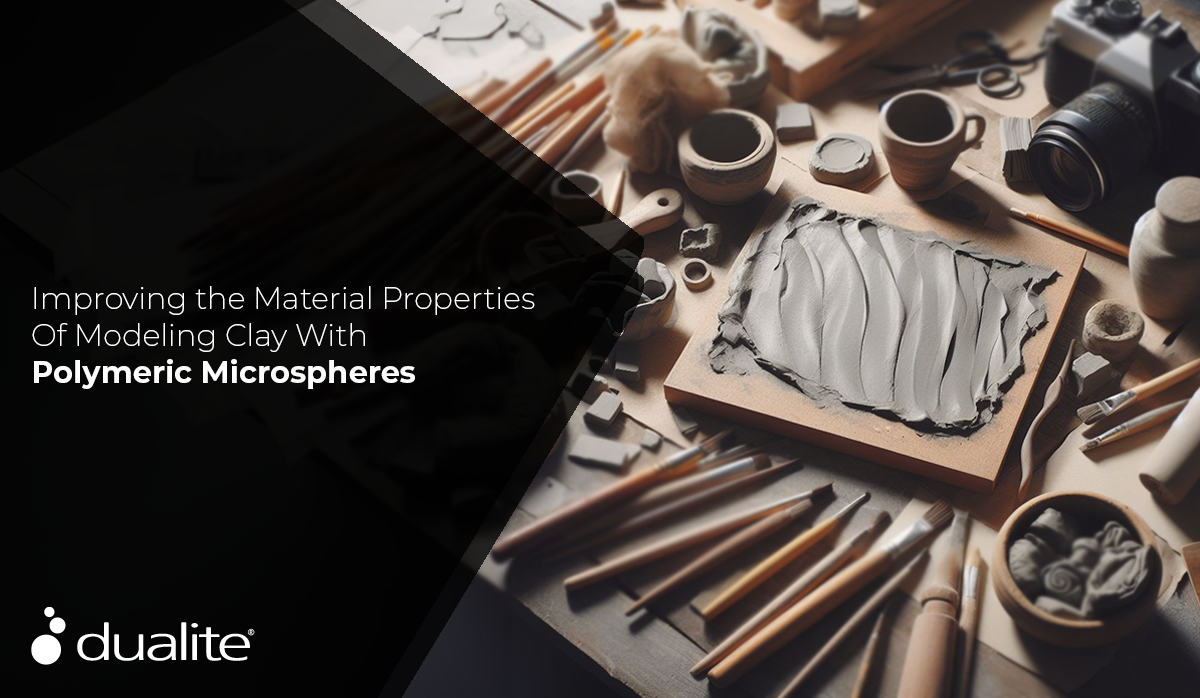Polymeric microspheres are often used in materials to enhance various properties and improve the...
Improving the Material Properties of Modeling Clay with Polymeric Microspheres

There are a number of common problems that you can encounter when using modeling clay. You may notice issues with the weight, stickiness, stiffness, crumbling of the material, and flaws in the overall workability. For a practical example, you may notice issues when using clay to model a prototype; material stiffness may make it hard to shape and smooth the clay into workable shapes.
Polymeric microspheres can be used in modeling clays to enhance certain properties and improve the overall performance of the clay. Here's how polymeric microspheres can be beneficial in modeling clays:
8 Benefits of Using Polymeric Microspheres in Modelling Clay
- Lightweighting: Polymeric microspheres are lightweight and can be added to modeling clays to reduce their overall density. This makes the clay easier to work with and manipulate, especially for large-scale or intricate projects. The lightweight clay is also more comfortable for users to handle and shape for extended periods.
- Volume Expansion: Microspheres can increase the volume of the modeling clay without adding extra weight. This can be useful for artists and sculptors who want to create larger sculptures without using excessive amounts of clay. It helps conserve material and reduces costs.
- Improved Workability: Adding polymeric microspheres to modeling clay can enhance its workability and texture. The microspheres act as fillers, making the clay smoother and easier to mold and shape. This can be especially beneficial for fine details and intricate designs.
- Reduced Cracking and Shrinkage: The addition of microspheres can help reduce cracking and shrinkage as the clay dries or cures. This is particularly important for projects that require minimal distortion or cracking during the drying process.
- Enhanced Strength: Depending on the type of microspheres used and their concentration, they can contribute to the overall strength and durability of the clay once it hardens. This is valuable for sculptures or models that need to withstand handling or environmental stressors.
- Thermal Insulation: Certain types of microspheres have insulating properties, which can be beneficial if the modeling clay is used to create items like oven-safe cookware, where insulation is required to protect against heat.
- Cost-Efficiency: Microspheres reduce material costs of modeling clay as they are a cost-effective volume filler, thus reducing the amount of base clay material needed for a project.
- Customization: Microspheres come in various sizes and materials, allowing for customization of the clay's properties. Depending on the desired outcome, different types of microspheres can be selected to achieve specific characteristics in the clay.
When using polymeric microspheres in modeling clays, it's essential to consider the compatibility of the microspheres with the clay matrix and the intended use of the finished product. Experimentation may be necessary to determine the optimal ratio of microspheres to clay to achieve the desired properties.
Additionally, artists and sculptors should be aware that the addition of microspheres may alter the drying or curing characteristics of the clay, so they should adapt their techniques accordingly. Overall, the use of polymeric microspheres can offer valuable advantages in terms of workability, cost, and performance when creating sculptures, models, or other clay-based artworks. Modeling clay is not the only surprising application of polymeric microspheres. If you're interested in learning how microspheres can improve the material properties at your job, get




